 SanDisk has just announced its latest 32 GB Extreme series SD Card, due in August with 32 GB capacity -- and running at up to 30 MB/sec. read and write data rates.
SanDisk has just announced its latest 32 GB Extreme series SD Card, due in August with 32 GB capacity -- and running at up to 30 MB/sec. read and write data rates.
Capacity is easy to get a handle on -- more bytes of storage gives more room for bigger photos, music, and high-definition video. But what's all this about speed and performance?
SD cards are marked with several types of information (besides the manufacturer), including the "SDHC" logo (SD card, High Capacity format), the storage capacity (i.e., 32 GB), and the speed "Class" -- the circle "C" with a number (i.e., 2, 4, 6, or 10).
The Class rating specifies the guaranteed data transfer rate, in megabytes per second. This is the baseline or minimum guaranteed performance of the card, so you can be sure it matches the recording rate requirements of your particular device. For example, AVCHD (H.264) format recording on an HD video camcorder requires a maximum of 24 Mbps (bits/sec), which corresponds to 3 M Bytes per second -- which means a Class 4 device (at 4 MB/sec.) provides all the performance required for the device, and a higher-performance class 6 card would provide no additional benefit, at least for recording.
So as SanDisk announces that it is stepping up its top-of-the-line Extreme cards from Class 6 to the new Class 10 (for a minimum of 10 MB/sec. recording rate), what's this about also promoting a 30 MB/sec. maximum speed?
What SanDisk, for one, would like you to understand that there's more to using memory cards than just recording photos or videos. When you upload all those HD videos to a computer, for example, or sync your media library of photos, music, and movies, a higher maximum speed gives headroom for a quicker transfer time.
And, interestingly, shooting photos can require higher data rates than HD video. Digital images now have higher resolution than HD video, and also are moving to less-compressed formats like RAW, so individual images are growing larger in size. And cameras aren't just for shooting one photo at a time, they support rapid burst modes to record continuous sequences of photos in fractions of a second.
In addition, the lines between different categories of devices are blurring -- today's digital cameras also shoot HD video, and today's HD camcorders also shoot high-quality high-res stills. So a camera's minimum Class rating may be set by its video recording mode, while a camcorder's read/write performance may be stressed by its photo burst recording mode.
So when shopping for a memory card, remember that while the Class defines the minimum baseline required data rate for a specific product, additional headroom in terms of the maximum speed rating can add visible performance benefits including longer burst recording.
See my full article: Flash Memory: Technology Summary for more on memory card formats and features
See previous posts: 32 GB SD Cards and Future Terabyte Memory Cards
See my Portable Storage Gallery for more on storage formats and devices.
 Find the
SanDisk Ultra II and
Extreme III SDHC cards
on Amazon.com
Find the
SanDisk Ultra II and
Extreme III SDHC cards
on Amazon.com
 Presentations from Streaming Media East conference (see previous post) --sessions and workshops -- are posted at www.streamingmedia.com/east.
Presentations from Streaming Media East conference (see previous post) --sessions and workshops -- are posted at www.streamingmedia.com/east. 
 Got pics in your pocket? You don't need to carry snapshots in your wallet anymore, much less a photo album in your bag -- That's so last decade!
Got pics in your pocket? You don't need to carry snapshots in your wallet anymore, much less a photo album in your bag -- That's so last decade! 

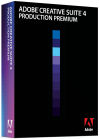 These days, digital media professionals need to do it all -- production and delivery, video and Web and print -- and work in all media -- video production, and audio, motion effects, Web and DVD. Similarly, no one tool can do it all, which leads to integrated suites like
These days, digital media professionals need to do it all -- production and delivery, video and Web and print -- and work in all media -- video production, and audio, motion effects, Web and DVD. Similarly, no one tool can do it all, which leads to integrated suites like 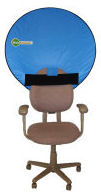 Instead, the WebAround is a flexible, collapsible, portable webcam backdrop. It's made from a light-weight nylon material, opens to a circle 40 inches in diameter, and -- here's the best part -- it has an adjustable strap to stand it up by slipping it over the back of a chair. Just set it up, sit down, and you're shooting in your own personal studio. This also gives you some privacy when you're working in an open space.
Instead, the WebAround is a flexible, collapsible, portable webcam backdrop. It's made from a light-weight nylon material, opens to a circle 40 inches in diameter, and -- here's the best part -- it has an adjustable strap to stand it up by slipping it over the back of a chair. Just set it up, sit down, and you're shooting in your own personal studio. This also gives you some privacy when you're working in an open space. The FlipShare software already provided simple video editing to make your own movies, and then share via e-mail and also by uploading directly to MySpace or YouTube. And Flip Video has just updated the FlipShare software to now share your videos through Flip Channels -- your own personal video collections shared on the web (at
The FlipShare software already provided simple video editing to make your own movies, and then share via e-mail and also by uploading directly to MySpace or YouTube. And Flip Video has just updated the FlipShare software to now share your videos through Flip Channels -- your own personal video collections shared on the web (at  These are compatible with video instant messaging and calling applications like Windows Live Messenger, AIM, Yahoo! Messenger, and Skype. And Logitech includes several
These are compatible with video instant messaging and calling applications like Windows Live Messenger, AIM, Yahoo! Messenger, and Skype. And Logitech includes several  The result is today's introduction of
The result is today's introduction of 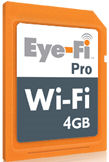 Eye-Fi added video uploads in March, along with a 4 GB card and a free iPhone app (see
Eye-Fi added video uploads in March, along with a 4 GB card and a free iPhone app (see  The new
The new 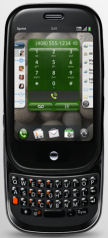 And the
And the  The
The  Then step up to higher-res sensors, higher-quality glass lenses, RightLight 2 technology for dimly lit scenes or poor backlight, Carl Zeiss Optics, and autofocus. The QuickCam Orbit AF ($129) even has motorized tracking to follow as you move around the room.
Then step up to higher-res sensors, higher-quality glass lenses, RightLight 2 technology for dimly lit scenes or poor backlight, Carl Zeiss Optics, and autofocus. The QuickCam Orbit AF ($129) even has motorized tracking to follow as you move around the room. 
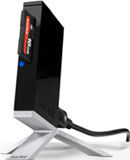 The smaller SanDisk ImageMate Multi-Card USB Reader/Writer is only some 2 1/4 x 1 1/2 x 3/8 inches. The trick to making it so small is that it has only one card slot, which can handle the basic variants of all four main memory card formats (SD / MMC, Memory Stick, and xD) -- though not the micro sizes or Compact Flash. It's rated to support up to 30 MB/sec. read and 27 MB/sec. write speeds with a SanDisk Extreme III 30 MB/Sec. SDHC card. Zoom!
The smaller SanDisk ImageMate Multi-Card USB Reader/Writer is only some 2 1/4 x 1 1/2 x 3/8 inches. The trick to making it so small is that it has only one card slot, which can handle the basic variants of all four main memory card formats (SD / MMC, Memory Stick, and xD) -- though not the micro sizes or Compact Flash. It's rated to support up to 30 MB/sec. read and 27 MB/sec. write speeds with a SanDisk Extreme III 30 MB/Sec. SDHC card. Zoom! The sibling SanDisk ImageMate All-In-One USB Reader/Writer is about twice as long, to fit the more traditional four card slots (for microSD, SD/MMC, Memory Stick / Duo, and CF variants). And it's rated to support up to 34 MB/sec. with a SanDisk Extreme IV 45 MB/sec. CompactFlash card.
The sibling SanDisk ImageMate All-In-One USB Reader/Writer is about twice as long, to fit the more traditional four card slots (for microSD, SD/MMC, Memory Stick / Duo, and CF variants). And it's rated to support up to 34 MB/sec. with a SanDisk Extreme IV 45 MB/sec. CompactFlash card.